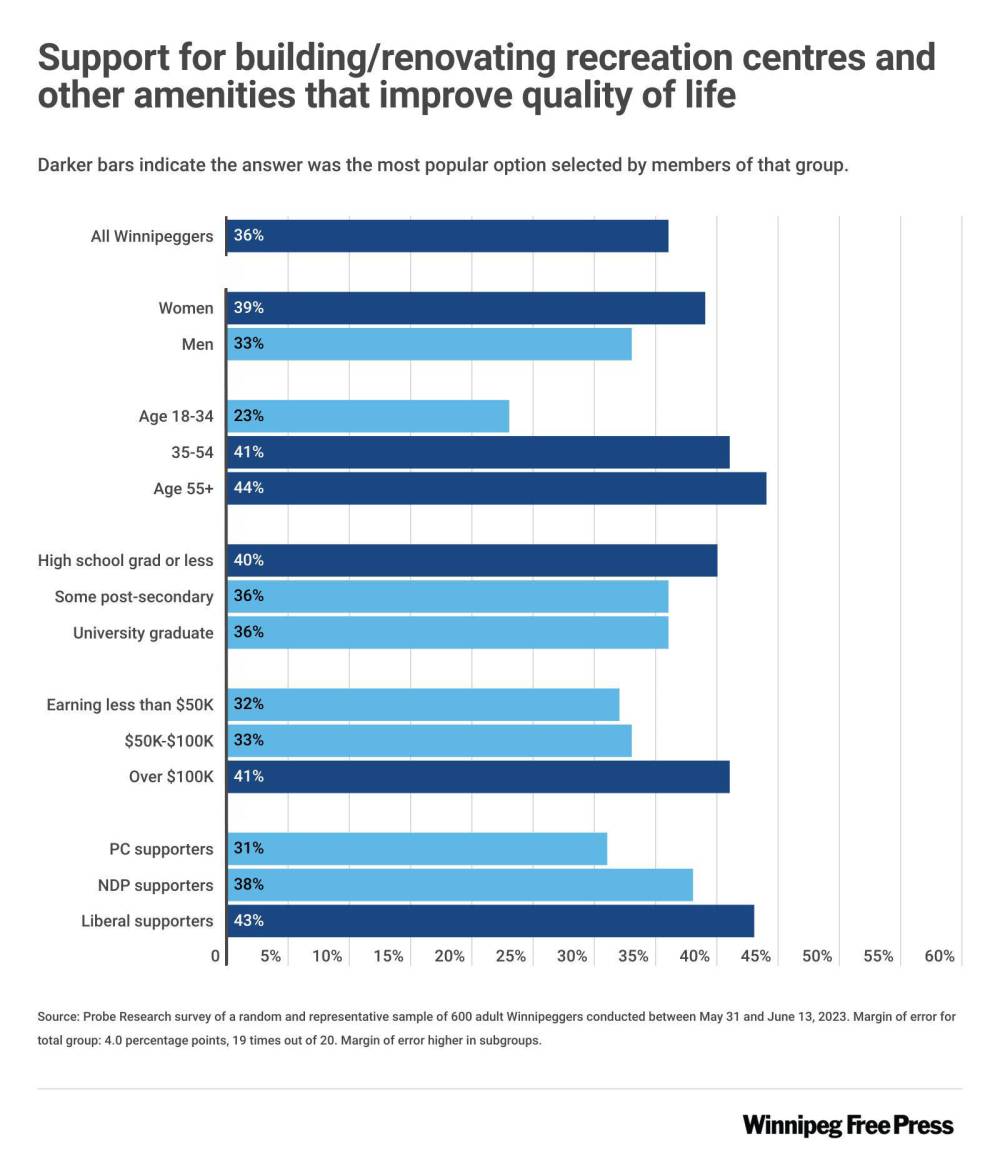City split three ways on desired infrastructure path: poll
Read this article for free:
or
Already have an account? Log in here »
To continue reading, please subscribe:
Monthly Digital Subscription
$0 for the first 4 weeks*
- Enjoy unlimited reading on winnipegfreepress.com
- Read the E-Edition, our digital replica newspaper
- Access News Break, our award-winning app
- Play interactive puzzles
*No charge for 4 weeks then price increases to the regular rate of $19.00 plus GST every four weeks. Offer available to new and qualified returning subscribers only. Cancel any time.
Monthly Digital Subscription
$4.75/week*
- Enjoy unlimited reading on winnipegfreepress.com
- Read the E-Edition, our digital replica newspaper
- Access News Break, our award-winning app
- Play interactive puzzles
*Billed as $19 plus GST every four weeks. Cancel any time.
To continue reading, please subscribe:
Add Free Press access to your Brandon Sun subscription for only an additional
$1 for the first 4 weeks*
*Your next subscription payment will increase by $1.00 and you will be charged $16.99 plus GST for four weeks. After four weeks, your payment will increase to $23.99 plus GST every four weeks.
Read unlimited articles for free today:
or
Already have an account? Log in here »
Hey there, time traveller!
This article was published 03/07/2023 (869 days ago), so information in it may no longer be current.
Tina Montemayor is like many Winnipeggers, staring at a public policy fork in the road.
As a commuter, she knows how frustrating driving in the city can be — especially Kenaston Boulevard at rush hour.
Route 90 has become a no-go zone for her as she opts to drive down Shaftesbury Boulevard, then McCreary Road, McGillivray Boulevard and a short stretch on Kenaston to reach her Bridgwater neighbourhood home after work.
“For my own mental health, I’m avoiding Kenaston,” Montemayor said with a laugh. “I know how crazy the traffic is.”
If another lane were added, however, she says she would take take Kenaston all the way home.
But when asked to choose between more concrete traffic lanes, more green and recreational space or more rapid transit, Montemayor’s decision mirrors that of most Winnipeggers, according to a new Probe Research survey for the Free Press.
While she’s all for widening roadways — like 31 per cent of respondents — Montemayor desires more spending on recreation, which edged out transportation as the top priority in Probe’s poll at 36 per cent.
“For me, (it’s) more funding so that people get more active and get to interact with each other,” Montemayor said.
With the City of Winnipeg proposing two road-widenings — Route 90 (Kenaston) between Ness and Taylor avenues, and Chief Peguis Trail, at an estimated cost of $1 billion — the Free Press asked Probe to survey residents to ask which of the following would be their top priority: widening major roadways, building more rapid transit, or creating and renovating recreation facilities and other amenities that improve quality of life.
The results elicited a near three-way split.
Suburban areas in north Winnipeg were most likely to prioritize expanding roadways, as were Progressive Conservative voters.
“Not surprisingly, you have… people who live in some of the more suburban areas who are affected by congestion and gridlock (picking roadway expansion),” said Curtis Brown, a principal with Probe Research.
However, despite Winnipeg capital spending debates often being framed around “better roads” or more active and rapid transit, the data show “a pretty strong current across the city” of people wanting recreation investment, Brown said.
Spending more on recreation topped Robin LaFreniere’s list.
“Everyone’s struggling with their mental health,” said LaFreniere, 35. “Wrapping around more wellness and (having) a bit (of a) slower pace for people, I think, would be good.”
She’s taken her five-year-old son to parks, pools and play structures. She couldn’t choose a favourite spot — all are “unique” — but more free programming at facilities is needed, LaFreniere said.
“I think no matter where you live — whether you live in Wolseley, or whether you live in the far reaches of North Kildonan — you want to have rinks and pools and splash pads that you and your family can use,” Brown said. “It’s pretty much universal.”
MIKE DEAL / WINNIPEG FREE PRESS Spending more on recreation topped Robin LaFreniere’s list.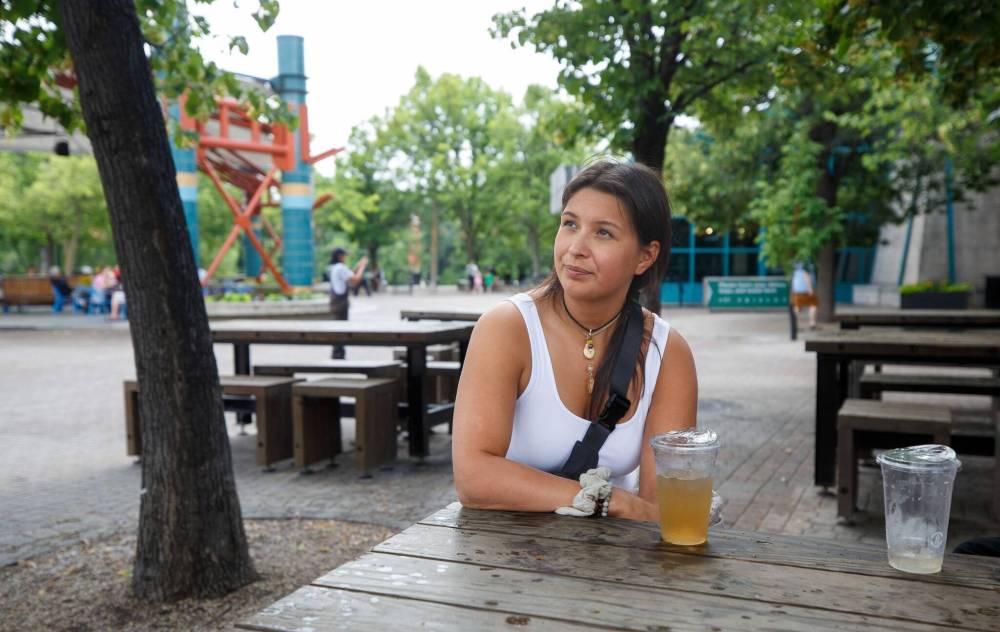
Graham Lowes considers Winnipeg behind, when comparing it to peers’ recreation centres: “Go to a pool in any place in B.C. or Alberta… even Steinbach.”
Support for recreation was widespread throughout Winnipeg, Probe’s survey found.
At least one-third of respondents in each area — central Winnipeg, the suburban north and the suburban south — listed recreation centres as their top priority, at 41, 37, and 33 per cent, respectively.
Julie Chamberlain, a University of Winnipeg urban studies professor who researches urban development and planning, counted herself among the group to put recreation at the forefront.
“It addresses… a whole range of concerns the city has that seem disconnected.”
Studies show accessible recreation improves physical and mental health, community safety and connection, she said.
“It’s especially important in neighbourhoods where people can’t afford to pay to send their kids to programs, and where there isn’t adequate and safe and attractive greenspace.”
MIKE DEAL / WINNIPEG FREE PRESS Graham Lowes considers Winnipeg behind, when comparing it to peers’ recreation centres.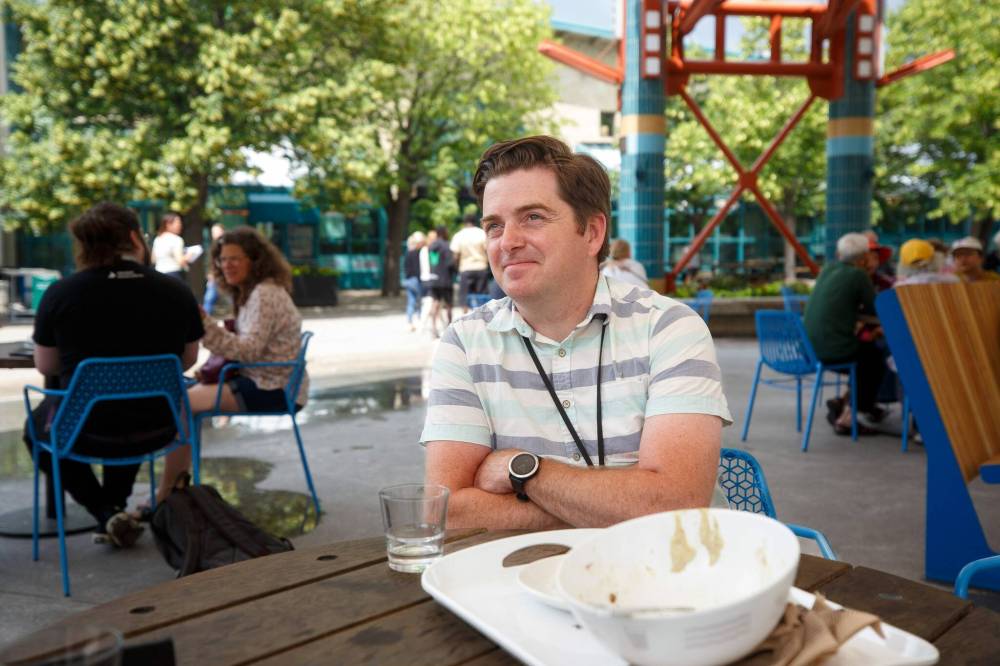
Widening roadways, of the three options, was at the bottom of Chamberlain’s list.
“The expansion of roadways is…. notoriously poor planning practice. I know it seems counter-intuitive,” she said. “It doesn’t do what people think it does.”
Road-widening draws more traffic and pollution, and often comes at the expense of green space, Chamberlain said.
Ciara Okumura, 25, would prefer to not own a vehicle. Lately, she’s been living the lifestyle; her car broke down.
“I think we should be moving away from a car-oriented city anyways,” Okumura said, waiting at a rapid transit station near Pembina Highway. “Just for our carbon footprint.”
Thirty-two per cent of survey respondents crowned rapid transit their top priority. The number jumps to 45 per cent when counting respondents ages 18 through 34, and 43 per cent when considering households earning less than $50,000 annually.
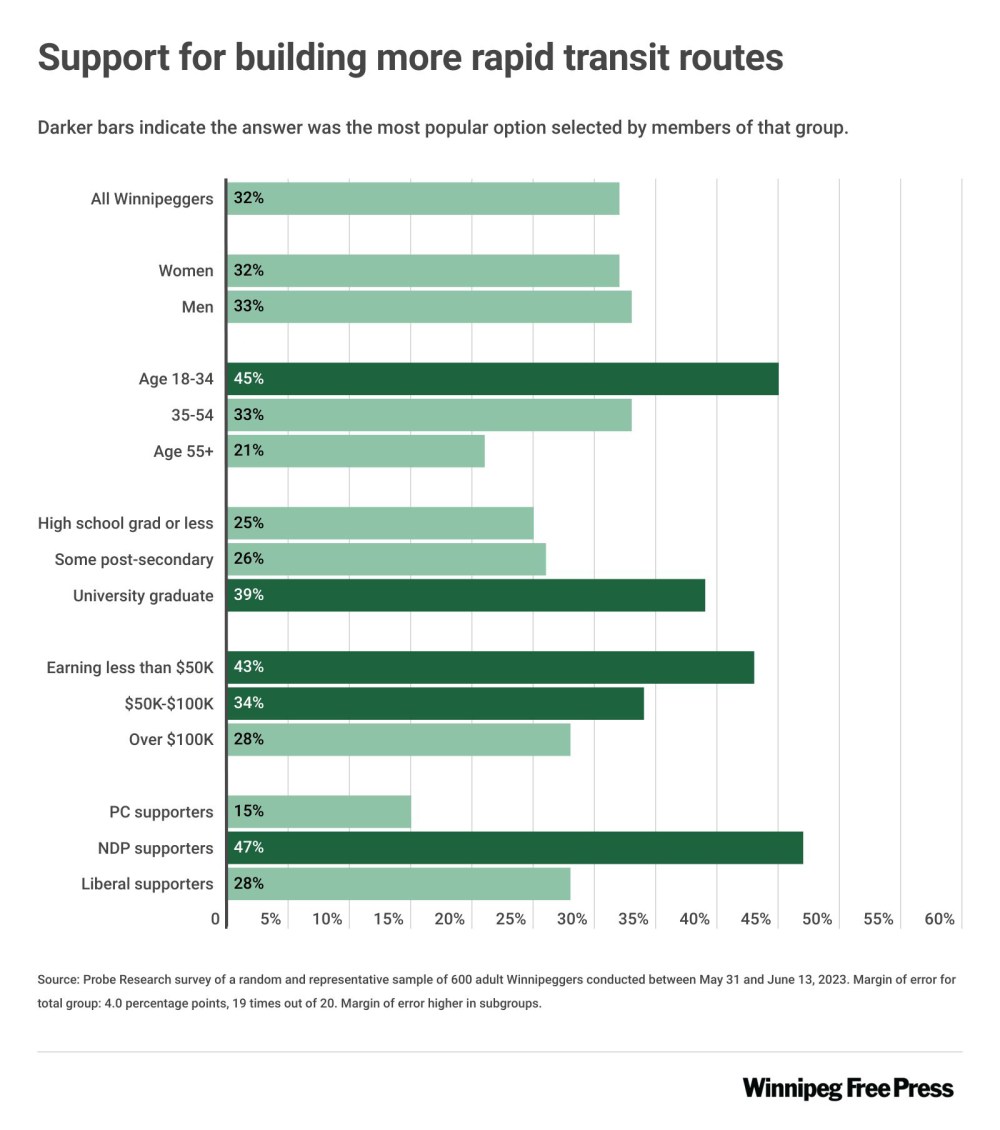
Nearly half of NDP voters — 47 per cent — ranked rapid transit a top priority, as did central neighbourhood residents (45 per cent).
“We need a way better bus system,” Okumura said. “Not even just rapid transit, just all the buses working better.”
She’d like reliable bus service — especially in the winter, as she’s waiting in freezing temperatures for a ride to university.
It’s not uncommon for buses to be late or pass her by, too full to stop. The Linden Woods resident said she needs a car because buses don’t come frequently or transport her everywhere she needs.
Chamberlain, who lives in the North End, echoed that concern.
“By the time I’ve waited for the bus to come, I could’ve ridden my bike there already,” Chamberlain said.
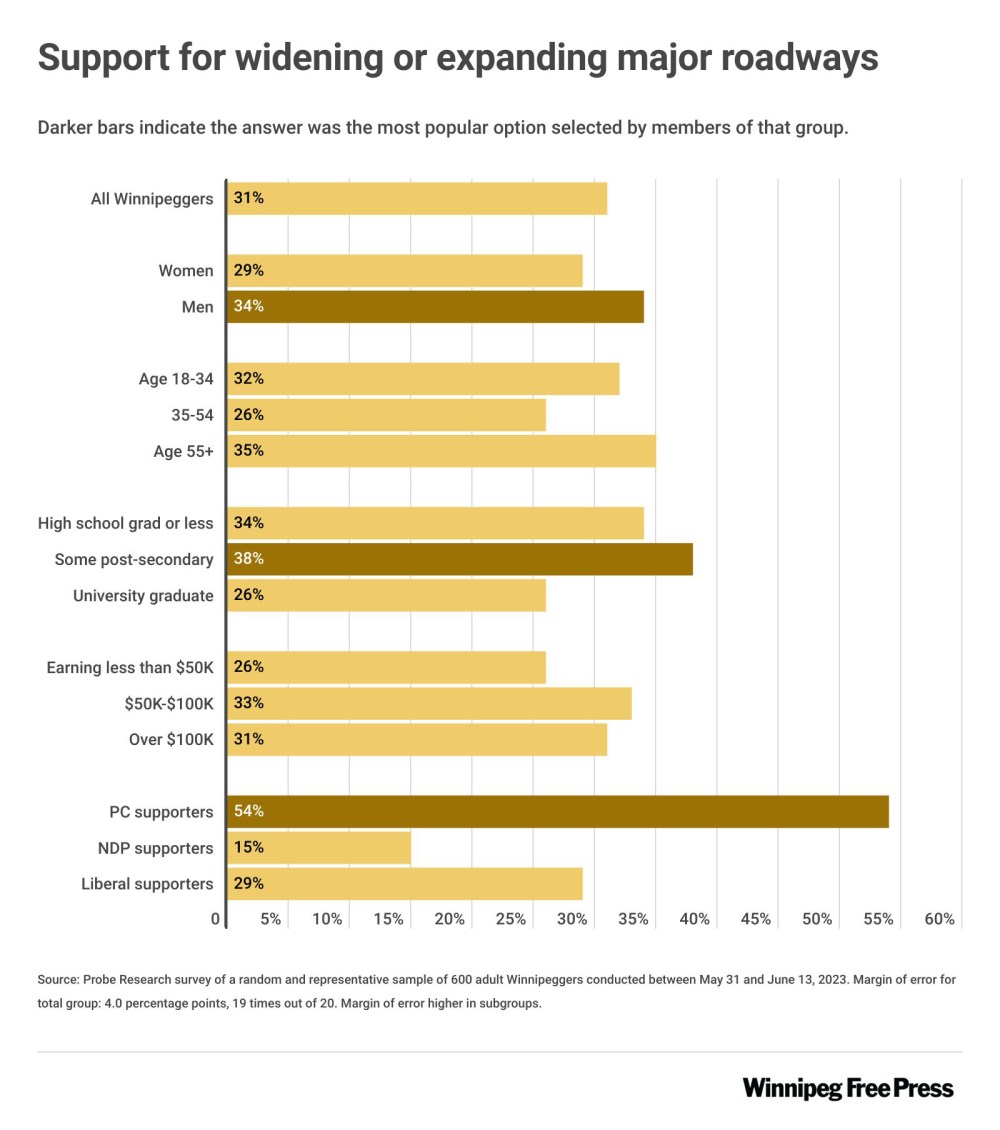
Kyle Owens, president of Functional Transit Winnipeg, believes increasing bus frequency — and returning the fleet to 2018 levels — is the first step to improving Winnipeg Transit.
“No one can be forced onto a bus with enough advertising,” Owens said. “It has to be a more convenient option than just taking your car.”
Speeding up implementation of the city’s Winnipeg Transit Master Plan is also critical, Owens said.
“So many families are suffering economically,” he added. “The existing system does not meet the needs of so many people who would be happy to not buy a car, not use their car or get rid of their car.”
Winnipeg Transit has made headlines for a persistent driver shortage. Meantime, the City of Winnipeg is projecting a $27-million deficit this year, one which is expected to drain its so-called “rainy day” fund.
Several people the Free Press spoke to highlighted the need for more active transit, including Lowes, who bikes on major arteries such as Kenaston Boulevard.
“If they’re going to widen the roads, they should put a (protected) bike lane,” he said, adding he regularly visits a bustling Assiniboine Avenue cycle track. “When you build that infrastructure, people use it.”
Survey respondents answered online from May 31 through June 13, after being randomly recruited via phone call. The survey has a 95 per cent accuracy, plus or minus four percentage points, if Winnipeg’s entire adult population had been surveyed.
gabrielle.piche@winnipegfreepress.com
Probe Research/Free Press findings on capital project spending
The Free Press and Probe Research surveyed 600 Winnipeg residents, asking them to choose a major capital project area to spend money on: widening and expanding major roadways, including Route 90 and Chief Peguis Trail; building more rapid transit routes; and building and renovating recreational facilities, and other facilities that improved quality of life.
The results elicited a near three-way split, with recreation services garnering a slim majority: 36 per cent.
At least one-third of residents in each city sector — central, the suburban north and the suburban south — chose recreational facilities as their top priority, at 41, 37 and 33 per cent, respectively.
Forty-three per cent of Liberal voters prioritized recreation centres, followed by 38 per cent of NDP voters, and 31 per cent of Progressive Conservative supporters. Wealthier and older individuals — 44 per cent of respondents aged 55 and older, and 41 per cent of households earning at least $100,000 — gave recreation facility spending their top spot.
Rapid transit attracted the second-most votes at 32 per cent. It was the highest priority for residents in Winnipeg’s central and suburban south neighbourhoods, at 45 and 35 per cent, respectively.
Nearly half of NDP voters — 47 per cent — supported rapid transit spending first. Younger respondents were most likely to prioritize rapid transit, at 45 per cent, as were people earning less than $50,000. Thirty-nine per cent of university graduates picked rapid transit spending, compared to 26 per cent in the trades or with some post-secondary schooling, and 25 per cent of high school graduates (and less schooling).
Widening roadways took last place, with 31 per cent of respondents identifying it as their top priority.
Winnipeg’s suburban north was the only area to place it as a No. 1 priority — at 41 per cent — as did a majority of Progressive Conservative voters, at 54 per cent.
Far fewer Liberal and NDP supporters chose road-widening, at 29 and 15 per cent, respectively.
Thirty-eight per cent of trades graduates, or people with some post-secondary education, called for road-widening in Probe’s survey.
One-third of households in the $50,000 to $100,000 range voted for expanding roadways, compared to 26 per cent of households making less than $50,000 and 31 per cent of households earning more than $100,000.
Thirty-five per cent of people age 55 and older prioritized widening roadways, compared to 32 per cent of adults age 18 through 34, and 26 per cent of those age 35 to 54.
Survey respondents answered online from May 31 through June 13 after being randomly recruited via phone call. The survey has a 95 per cent accuracy, plus or minus four percentage points, if Winnipeg’s entire adult population had been surveyed.
– Gabrielle Piché

Gabrielle Piché reports on business for the Free Press. She interned at the Free Press and worked for its sister outlet, Canstar Community News, before entering the business beat in 2021. Read more about Gabrielle.
Every piece of reporting Gabrielle produces is reviewed by an editing team before it is posted online or published in print — part of the Free Press‘s tradition, since 1872, of producing reliable independent journalism. Read more about Free Press’s history and mandate, and learn how our newsroom operates.
Our newsroom depends on a growing audience of readers to power our journalism. If you are not a paid reader, please consider becoming a subscriber.
Our newsroom depends on its audience of readers to power our journalism. Thank you for your support.


